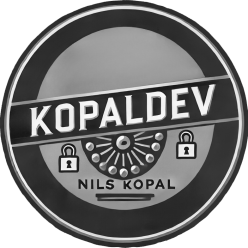In September 2025 I was invited to speak at MuseumsUNI in the Museum Schloss Rheydt in Mönchengladbach. In front of about 60 pupils I gave a talk called “Geheime Botschaften knacken – Secret Message Cracking”. I’ve now re-recorded it in English for my YouTube channel “Cryptography for everybody”, and I’d like to briefly introduce it here.
What the talk is about
We start with a simple question:
How can we read an encrypted historical letter if we don’t know the key?
To answer it, I first show some basics using classical ciphers such as the Caesar cipher and monoalphabetic substitutions. We look at why big key spaces don’t automatically mean security, and how letter frequencies and patterns still betray the underlying language.
From there I move on to the modern tools we use today. With CrypTool 2 we can:
- compute letter and n-gram statistics,
- run heuristic attacks like hillclimbing,
- and test thousands of key candidates per second.
This is exactly the kind of software support we developed and used in the DECRYPT project and in my daily research (in the new DESCRYPT projekt :-)).
Three historical crypto stories
The heart of the talk is three short case studies:
- Maximilian II’s election letters (1570s) – encrypted with a mixture of symbols, numbers and special characters; together with Michelle Waldispühl we reconstructed the system and read the emperor’s “campaign strategy”.
- The Ramanacoil cipher (1674) – a VOC letter sent from Ceylon to the Netherlands, using alchemical symbols and code signs for places like Ceylon and Ramanacoil, decrypted with the help of an original key and CrypTool 2.
- The UCL Brougham letter (1724) – discovered on social media, initially looked like a complex homophonic system, but turned out to be a surprisingly simple numeric substitution once we removed the nulls.
Each example shows a different mixture of paleography, language expertise and computer-based cryptanalysis. I also have detailed blog articles on this blog 🙂
Why you might enjoy the video
If you are curious about:
- how historical ciphers actually worked,
- how we combine archives, software and a bit of stubbornness,
- and how “mysterious symbols” slowly turn into readable text,
then this talk might be fun for you. It’s aimed at interested students, developers and anyone who likes a mix of history, cryptography and a bit of detective work.
